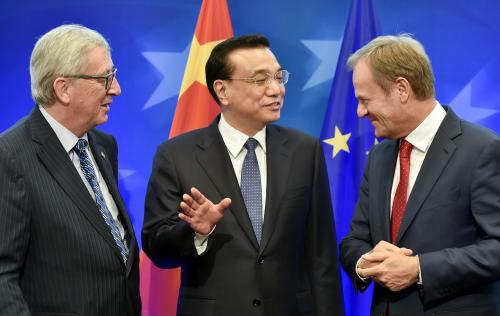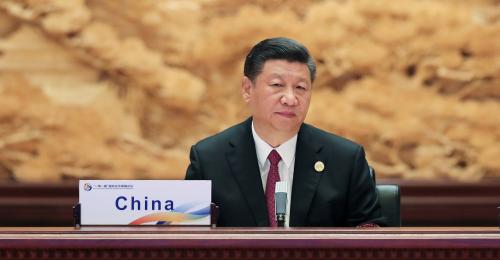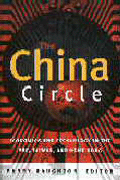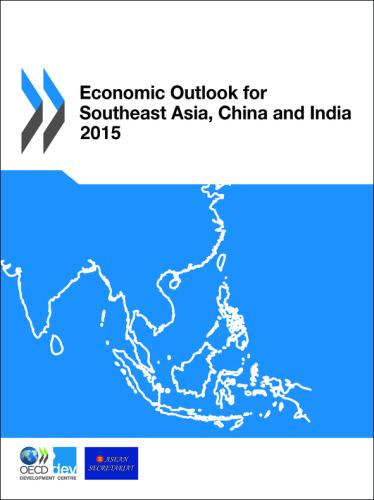Content from the Brookings Institution India Center is now archived. After seven years of an impactful partnership, as of September 11, 2020, Brookings India is now the Centre for Social and Economic Progress, an independent public policy institution based in India.
This article first appeared in Hindustan Times. The views are of the author(s).
In a rare high-level engagement by India in an increasingly pivotal region, President Ram Nath Kovind is on a visit to Bulgaria and the Czech Republic.
Long seen as an area of competing Russian and western interests, central and eastern Europe (CEE) has not always featured prominently in India’s foreign policy agenda. Despite trips to 11 western European countries since 2014, Prime Minister Narendra Modi is yet to visit central or eastern Europe. In part, this is because economic and people-to-people links remain weak. The region accounts for only 1.2% of India’s exports. While Indian investment is slowly growing — consider Apollo Tyres’ $557-million investment in a greenfield facility in Hungary in 2017 — it is still modest. Despite these constraints, the CEE countries appear keen to bolster business ties with India in agriculture, energy, transportation, cyber security, and information technology.
While Indian engagement with the CEE to date has been mostly economic, it is natural that it should start assuming a strategic character as well, not least because of China’s sustained outreach. In July, Bulgaria hosted the seventh ‘16+1’ Summit, a meeting of central and eastern European leaders with China that saw participation from Poland, the Czech Republic, Slovakia, Hungary, Romania, the Baltic States, Albania, and six former Yugoslav countries.
Since its initiation in 2012, the ‘16+1’ framework has been somewhat controversial. Although Chinese Premier Li Keqiang has stated that the mechanism is not a geopolitical tool, many western European officials have raised concerns about Beijing using the body to drive a wedge between the European Union and some of its member states, 11 of whom are participants.
For Beijing, the region’s true significance lies in Europe being the endpoint of the network of infrastructure projects that comprise China’s ambitious Belt and Road Initiative (BRI). While many European leaders initially welcomed Chinese investments as part of BRI, some have started to express doubts. British Prime Minister Theresa May recently emphasised that China needs to adhere to global standards. Similarly, French President Emmanuel Macron has argued: “The ancient Silk Roads were never only Chinese…If they are roads, they cannot be one-way.” But despite the considerable coverage — and growing anxiety — over BRI and 16+1 in Europe over the past few years, a few realities need to be kept in mind about Chinese engagement with the CEE.
First, as in other regions, there are significant gaps between the amounts of Chinese investment promised and the amounts delivered. A special $11.15 billion fund established by China has not been tapped, grand plans for a Budapest-Belgrade railway line have been derailed for potentially violating EU tendering rules, and talk of China financing a new airport in Warsaw appears to have lost steam. Meanwhile, China’s economic relations with western Europe dwarf those with the CEE states. Beijing’s largest trade relationship in the region is with Poland, but its exports there are still less than a quarter of its outgoing trade to Germany. The disparity applies equally to investment. In the UK alone, China has been involved in deals worth over $70 billion, compared to just $3.3 billion in the nine CEE states for which reliable data is available.
Nonetheless, regional leaders point to the dire need for infrastructure investment from China, and cite the successful completion of Chinese-backed projects such as the Pupin Bridge in Serbia and highways in Macedonia. Officials from these countries also argue that the 16+1 format is the only means for smaller countries to engage bilaterally with Beijing. In private, diplomats from the region reveal concerns about the impact of Chinese investments on trade imbalances, the levels of associated debt, and political strings being attached. For instance, Montenegro’s debt to China has increased substantially over the course of the construction of a recent highway.
Beyond the gap between promises and delivery, there is also immense variation in China’s economic relations with the CEE countries. As of 2015, Hungary was the largest recipient of official Chinese financing, while other countries had received negligible sums. Among non-EU states, Serbia has been the largest recipient, while Chinese investment in the Baltic States has been relatively insignificant. Similarly, while China’s exports have increased across the region, its trade with the likes of Bosnia and Herzegovina or Albania remains marginal.
Finally, despite the relatively modest economic impact of 16+1 and the variation in relations, China is already beginning to demonstrate its political influence in the region. For example, Hungary, Croatia, Serbia, and Montenegro have supported China’s controversial claims to the South China Sea. Similarly, Hungary has sometimes been outspoken in calling for China to be recognised as a market economy, a position at odds with the rest of the European Union.
The scepticism of China’s efforts naturally presents opportunities for India. Indeed, in one area in which India is carving out a normative leadership role for itself (in terms of sustainable connectivity), central and eastern Europe may well be an area of promise, one in which India can support efforts by the European Union and others. But the main obstacle, other than scale, is the lack of exposure and knowledge about opportunities in each other’s countries among business communities in India and the CEE states. Greater political engagement can help to rectify some of that.
Yamini Sharma, foreign policy intern with Brookings India, contributed to this article.









Commentary
Op-edHere’s why central and eastern Europe may become an area of promise for India
September 5, 2018